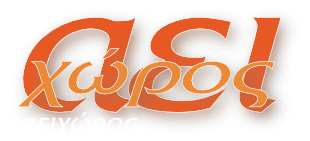Αναπτυξιακά πρότυπα και αστικά κέντρα στον ελληνικό περιφερειακό προγραμματισμό μετά το 2000
DOI:
https://doi.org/10.26253/heal.uth.ojs.aei.2011.239Λέξεις-κλειδιά:
Πολική ανάπτυξη, Ολοκληρωμένη-τοπική ανάπτυξη, Περιφερειακός προγραμματισμός, Αστική ανάπτυξη, Κοινοτικό Πλαίσιο Στήριξης 2000-2006, Εθνικό Στρατηγικό Πλαίσιο Αναφοράς 2007-2013, Γενικό πλαίσιο χωροταξικό σχεδιασμού και αειφόρου ανάπτυξηςΠερίληψη
Με την έναρξη της νέας χιλιετίας, παρατηρείται μια εντεινόμενη τάση στην Ελλάδα για επαναξιοποίηση στον αναπτυξιακό προγραμματισμό για τα αστικά κέντρα του προτύπου της πολικής ανάπτυξης και διάχυσης, που στοχεύει πρωταρχικά στην ενδυνάμωση της ανταγωνιστικότητας και εξωστρέφειας των πόλεων, καθώς επίσης και στην ενίσχυση της χωρικής συνοχής της χώρας, παράλληλα βέβαια με την εφαρμογή ενός προτύπου ολοκληρωμένης-τοπικής-ενδογενούς ανάπτυξης, που θα προωθήσει την αποτελεσματικότερη αντιμετώπιση των ενδο-αστικών ανισοτήτων και την ενίσχυση της συνοχής του αστικού χώρου. Το παρόν άρθρο προσπαθεί αρχικά να σκιαγραφήσει τη νέα στρατηγική αστικής ανάπτυξης στον αναπτυξιακό προγραμματισμό και κατόπιν να παρουσιάσει τα ανακύπτοντα προβλήματα, αλλά και να διαγνώσει τις διαφαινόμενες δυνατότητες και προοπτικές στην πρακτική εφαρμογή του προτύπου της πολικής και της ολοκληρωμένης – τοπικής ανάπτυξης. Στο πλαίσιο αυτό, αφού αναλύονται το περιεχόμενο και τα θεμελιώδη στοιχεία της περιφερειακής αναπτυξιακής στρατηγικής, αποτυπώνονται οι βασικές κατευθύνσεις των θεωρητικών προσεγγίσεων για την πολική και για την ολοκληρωμένη-τοπική-ενδογενή ανάπτυξη και για το σχετικό ρόλο των πόλων και κέντρων ανάπτυξης στην αναπτυξιακή διαδικασία. Σκιαγραφείται η στρατηγική για την εξειδίκευση του αναπτυξιακού ρόλου των αστικών κέντρων, όπως διαμορφώθηκε στο Κοινοτικό Πλαίσιο Στήριξης της περιόδου 2000-06 και πρόσφατα στο Εθνικό Στρατηγικό Πλαίσιο Αναφοράς της νέας περιόδου προγραμματισμού 2007-13, καθώς επίσης και στο νέο πλαίσιο του Χωροταξικού Σχεδιασμού. Επιχειρείται συγκριτική ανάλυση των δύο προγραμματικών περιόδων ως προς τα στοιχεία και τα μέσα της αναπτυξιακής στρατηγικής για την ενεργοποίηση του αναπτυξιακού ρόλου των αστικών κέντρων της Ελλάδας στον περιφερειακό αναπτυξιακό σχεδιασμό. Τέλος, γίνεται προσπάθεια αποτίμησης των πολιτικών και διαμορφώνονται προτάσεις για τη βελτίωση και την αποτελεσματικότερη εφαρμογή της στρατηγικής αυτής, ενώ τίθενται επίσης ορισμένα σημαντικά ζητήματα προς περαιτέρω διερεύνηση και προβληματισμό.


